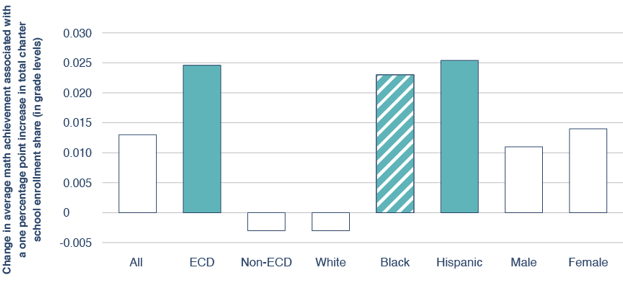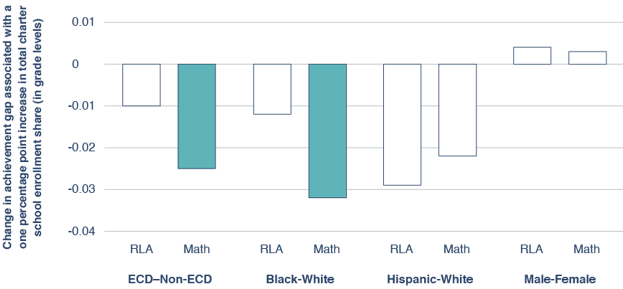![]() Making use of data from the Educational Opportunity Project at Stanford University, the Fordham Institute has produced a new study of metropolitan area academic achievement. Fordham finds that increased charter school market share is associated with statistically significantly higher scores for disadvantaged student populations.
Making use of data from the Educational Opportunity Project at Stanford University, the Fordham Institute has produced a new study of metropolitan area academic achievement. Fordham finds that increased charter school market share is associated with statistically significantly higher scores for disadvantaged student populations.
The chart below shows differences for math achievement for economically disadvantaged and Hispanic students as significant at the .05 level, and the difference for Black students significant at the .1 level.

The study also found evidence of narrowing achievement gaps in metropolitan areas with larger charter school shares in math, as evidenced below.

The Fordham findings are consistent with a great many studies that have found positive competitive effects associated with choice programs. The benefits are not limited to charter schools. Similar findings have been found with regard to private choice, and for areas with higher levels of choice between district schools.
Choice programs, rather than existing in silos, interact with each other. Charter and private choice programs create incentives for districts to open their doors for open enrollment. Once one district lowers the open enrollment drawbridge, nearby districts feel an increased pressure to follow-suit, and the competitive juices begin to flow.


